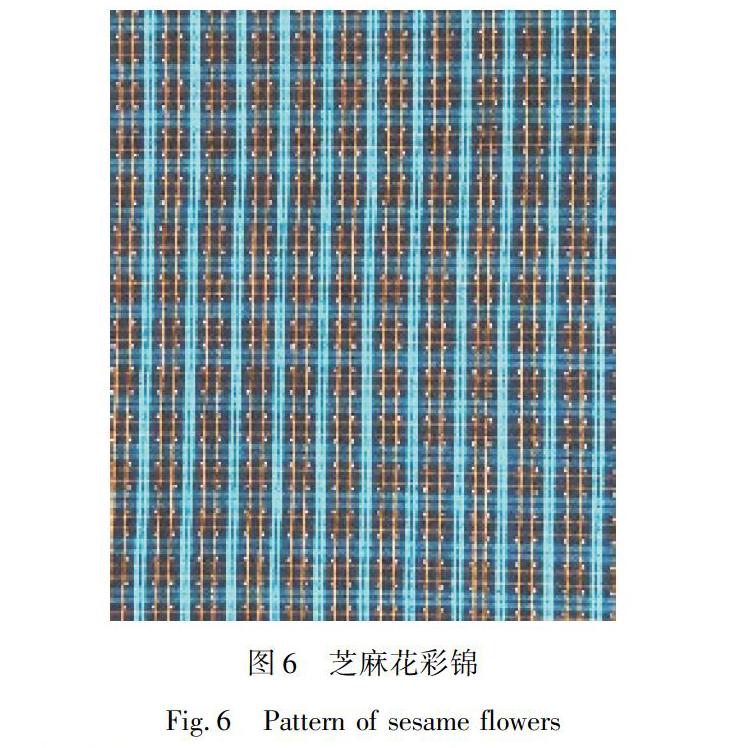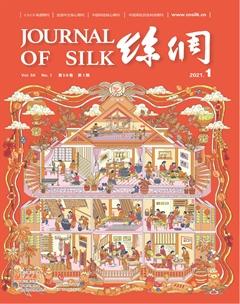鲁西南地区鲁锦图案的艺术特征及功能性探析
刘飞 刘水



摘要: 鲁锦图案是记载着鲁西南地区人们独特的造物思想和人文思想的文化符号,蕴含着浓郁的民风民俗文化,体现着鲜明的地域性特色。文章基于田野考察法,多次对鲁西南地区民间织锦乡镇实地调查,走访春秋源鲁锦博物馆和中国鲁锦博物馆,以馆内收藏及非遗传承人手工织造的鲁锦实物为研究对象,结合非遗传承人口述及织造演示,对鲁锦图案的纹样创作、色彩搭配、构图形式三方面进行艺术特征分析,深入挖掘其视觉形态下所蕴含的文化内涵,揭示其内在审美功能,旨在更好地体现鲁锦的文化价值,并为其与现代设计理念融合提供灵感来源。
关键词: 鲁锦图案;基础纹样;艺术特征;地域性;审美功能
中图分类号: TS941.12;J523.1
文献标志码: B
文章编号: 10017003(2021)01008507
引用页码: 011201
DOI: 10.3969/j.issn.1001-7003.2021.01.013(篇序)
Analysis of artistic features and functions of the patterns of Lu brocade in southwest Shandong
LIU Fei, LIU Shui
(School of Design, Jiangnan University, Wuxi 214122, China)
Abstract:
The pattern of Lu brocade is a cultural symbol that records the unique creation ideas and humanistic ideas of people in southwest Shandong. It contains rich folk customs and culture and embodies distinctive regional characteristics. According to the method of field investigation, the authors conducted many field investigations at the Lu brocade towns in southwestern Shandong, visited Chunqiuyuan Lu Brocade Museum of and Lu brocades Museum of China. Based on the research object of the Lu brocade collected by the museums and the Lu brocade hand-woven by intangible cultural heritage inheritors, and combined with the expression of intangible cultural heritage inheritors and weaving demonstrations, the authors analyzed artistic characteristics of patterns of Lu brocade from three aspects: pattern creation, color matching, and composition form, deeply explored the cultural connotation contained in the visual form, and revealed the intrinsic aesthetic function. This paper aims to better reflect the culture value of Lu brocade and provide a source of inspiration for its integration with modern design concepts.
Key words:
pattern of Lu brocade; basic pattern; artistic features; regionalism; artistic functions
魯锦是鲁西南地区民间艺术具有代表性的一种传统手工纺织品,是黄河文化历史积淀的重要代表,也是集群众艺术劳动和生产劳动于一体的生产者自身所需的艺术形式,在中国传统民间造物艺术中占据着一席之地。明清时期,鲁锦曾被当地官吏作为朝廷贡品进献给皇亲贵族使用;至20世纪70年代,鲁锦始终是鲁西南地区人们生活中不可或缺的必需品。1985年山东省工艺美术研究所首次对鲁锦调查研究,之后逐渐受到社会关注。1995年鄄城文物所所长路维民筹资创办了中国鲁锦博物馆;鲁锦于2006年被列入第一批省级非物质文化遗产名录,2008年被国家非物质文化遗产收录,2018年作为上合峰会的请柬包装呈现在各国家元首面前。笔者在对鲁锦博物馆路维民馆长采访时得知,随着现代纺织业的发展,机器逐渐代替手工,传统的鲁锦为纯手工织造,由于技艺过于繁琐,与现代快节奏的生活理念相悖,正面临着图案纹样种类失传、含义淡化等生存困境。近些年鲁锦逐渐得到学术界部分学者专家的关注,梳理相关研究内容与方向上大都是从民俗学角度出发,探讨其文化价值体现和技艺继承发展。如任雪玲等[1]以鲁锦的历史发展为切入点,探讨了鲁锦的图案与工艺特色,提出了传承和研发的建议;宋法强等[2]分析了鲁锦的传承现状,提出在图案、色彩、材质方面进行创新;刘娟等[3]对鲁锦中典型纹样的织造方法、组织结构进行了梳理总结。2019年8月至今,笔者多次对鲁锦集中产区济宁嘉祥和菏泽鄄城实地调研,观摩鲁锦传承人刘春英老师演示织锦技艺并向老师学习鲁锦技艺及其相关艺术表现手法。本文将以艺术学、美学与民俗学多学科结合,以刘春英老师口述资料并结合中国鲁锦博物馆馆藏手工织锦实物为案例,对鲁锦图案的艺术特征进行全面梳理,分析其审美功能,寻求传统民间艺术与现代设计的契合点,以期将鲁锦的传统造物美学与现代设计理念相契合,使民俗文化融入日常生活,从而使其更好地赓衍。

